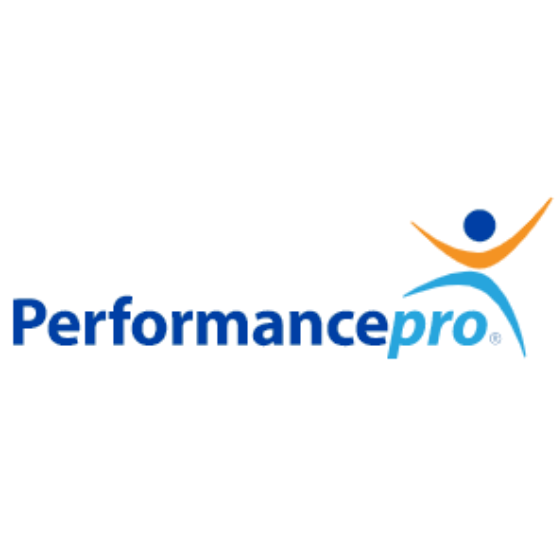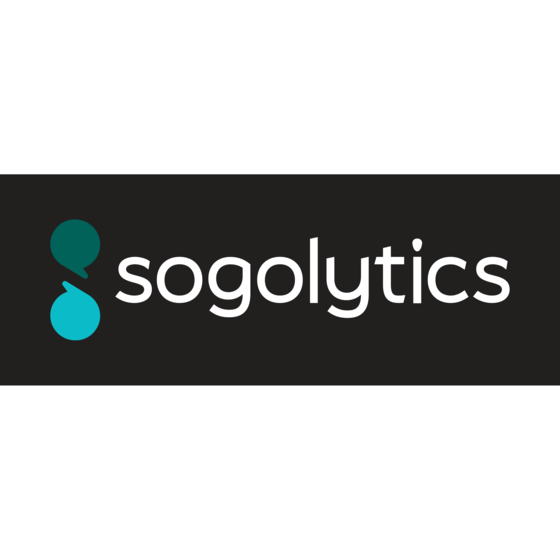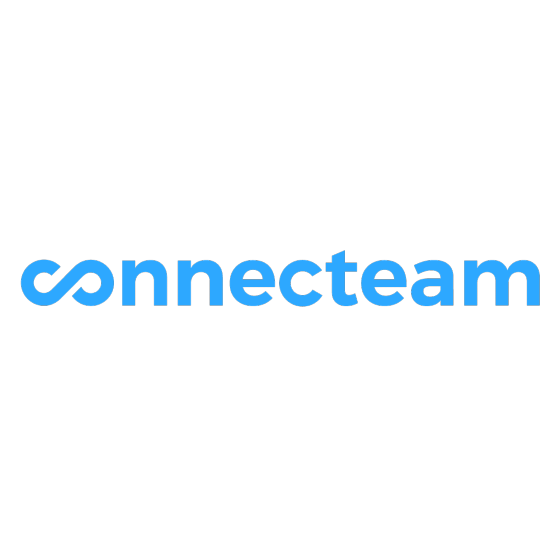10 Best Employee Experience Software Shortlist
Here's my pick of the 10 best software from the 20 tools reviewed.
Talk through what you’re looking for. Get a custom shortlist based on your needs. No fees.
Choosing the right employee experience software can feel overwhelming with so many options available. You need tools that measure employee satisfaction, boost engagement, and enhance performance, but where do you start?
In this guide, I’ll help you make your choice easier by sharing my insights on the best solutions to foster motivation, productivity, and a thriving workplace culture. Now, let's dive in to find the best option for you!
Why Trust Our Software Reviews
We've been testing and reviewing HR software since 2019. As HR professionals ourselves, we know how critical and difficult it is to make the right decision when selecting software.
We invest in deep research to help our audience make better software purchasing decisions. We've tested more than 2,000 tools for different HR use cases and written over 1,000 comprehensive software reviews. Learn how we stay transparent, and take a look at our software review methodology.
Best Employee Experience Software: Pricing Comparison Chart
This comparison chart summarizes pricing details for my top employee experience software selections to help you find the best software for your budget and business needs.
| Tool | Best For | Trial Info | Price | ||
|---|---|---|---|---|---|
|
1
|
Best for linking employee engagement and performance |
Free demo available |
Pricing upon request | Website | |
|
2
|
Best employee experience tool for customizable challenges and rewards |
Free demo available |
From $3/user/month | Website | |
|
3
|
Best for evaluating individual competencies to target future skill development |
Free demo available |
From $2 to $7/employee/month | Website | |
|
4
|
Best for frequent employee engagement insights |
Free demo available |
Pricing upon request | Website | |
|
5
|
Best employee experience software for a point-based reward system |
Free demo available |
Pricing upon request | Website | |
|
6
|
Best for peer-to-peer recognition |
Free demo available |
From $2 to $5/user/month ($3,000/year minimum) | Website | |
|
7
|
Best for holistic employee experience insights |
Free demo available |
Pricing upon request | Website | |
|
8
|
Best for data-driven employee engagement and performance insights |
10-day free trial + free plan available |
From $25/month (billed annually) | Website | |
|
9
|
Best for AI-driven employee experience management |
14-day free trial |
From $2/employee/month | Website | |
|
10
|
Best for internal updates and announcements |
14-day free trial + free plan available |
From $29/month (for up to 30 users, billed annually) + $0.5/user/month for each additional user | Website |
-
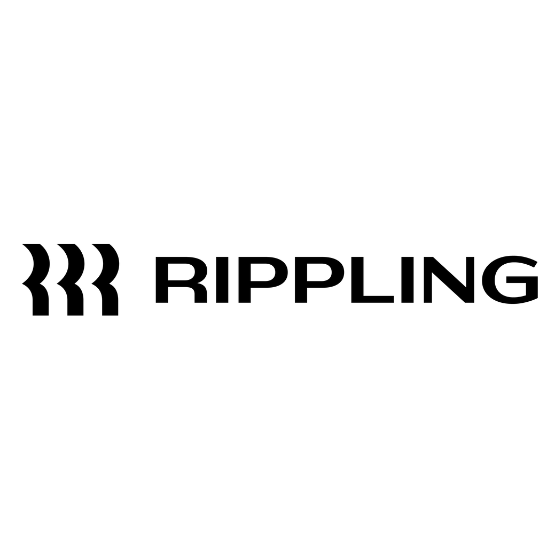
Rippling
Visit WebsiteThis is an aggregated rating for this tool including ratings from Crozdesk users and ratings from other sites.4.8 -

Guru
Visit WebsiteThis is an aggregated rating for this tool including ratings from Crozdesk users and ratings from other sites.4.6 -
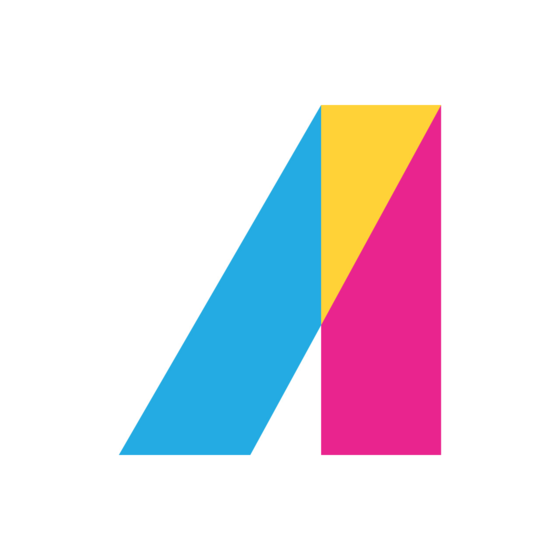
Absorb LMS
Visit WebsiteThis is an aggregated rating for this tool including ratings from Crozdesk users and ratings from other sites.4.6
Best Employee Experience Software Reviews
Below are brief descriptions of each employee experience software system that highlights each system’s best use cases and noteworthy features. I’ve also included screenshots to give you a snapshot of their user interface too.
Best for linking employee engagement and performance
Mitratech Trakstar is a cloud-based talent development platform for HR professionals. It's equipped with a variety of tools and features designed to help attract and retain top talent, as well as engage with and develop the entire workforce.
Why I picked Mitratech Trakstar: Their platform is comprised of four different modules, including performance management (Mitratech Trakstar Perform), applicant tracking (Mitratech Trakstar Hire), learning management (Mitratech Trakstar Learn), and workforce analytics (Mitratech Trakstar Insights).
Mitratech Trakstar’s performance management software has the required features to serve multiple purposes, including managing performance and engagement. With Perform, HR teams and managers can use tools like performance reviews, 360-degree online feedback, employee surveys, and goal setting tools to measure engagement, evaluate performance, and find solutions to improve their employee experience in general.
Other key features include self-reviews, tracking with real-time reporting, and flexible reporting stacked with rich data to help determine the top performers. The software also comes with automated email notifications, check-ins, and note taking features.
Their 360-degree performance review module allows managers to pre-select who will have access to 360-degree feedback by incorporating it directly into the performance review workflow. With this tool, managers are able to set and update goals while keeping track of the progress and performance of employees throughout the year.
Mitratech Trakstar’s employee survey software is another tool that plays a significant role in measuring and improving employee engagement and performance. It offers a library that contains a broad range of survey questions that are ready to use. HR managers can create and automatically send surveys on various topics or they can choose to create custom surveys to fulfill a specific data requirement.
Integrations are available with 25+ popular software systems including ADP Workforce Now, BambooHR, Google Workspace, Namely, Office365, Okta, OneLogin, Salesforce, Slack, UKG Pro, and Zoom.
Nectar
Best employee experience tool for customizable challenges and rewards
Nectar is an employee recognition and rewards platform designed to boost workplace morale and engagement by simplifying the recognition process. It offers a user-friendly interface, customizable rewards, and robust reporting capabilities, making it suitable for a wide range of businesses.
Why I picked Nectar: Its recognition and rewards platform allows employees to recognize each other's efforts and achievements, promoting a culture of appreciation and teamwork. The platform's robust rewards suite includes options such as Amazon items, branded swag, digital gift cards, and the ability to create custom rewards, providing employees with a variety of incentives that can be tailored to their preferences. This flexibility in rewards helps to keep employees motivated and engaged, as they can choose rewards that are meaningful to them.
Additionally, Nectar offers features such as automated birthday and work anniversary bonuses, exclusive employee discounts, and customizable challenges that align with organizational goals. These features not only help to streamline the recognition process but also contribute to a more cohesive and supportive work environment.
Integrations include BambooHR, ADP, Namely, Paylocity, Zenefits, Workday, Rippling, Gusto, Netsuite, G Suite, Okta, OneLogin, and Azure AD.
Best for evaluating individual competencies to target future skill development
Performance Pro is a performance management platform for small to mid-sized organizations that helps managers and employees set goals and monitor individual competencies as part of the performance appraisal process. Their performance management module is integrated with their learning management system, making it easy to develop training plans for future employee development.
Why I picked Performance Pro: I included Performance Pro in this list because of its focus on employee skill development for individual competencies. After completing a performance review in Performance Pro, employees and managers can work together to develop a customized learning path to help the employee address any weak spots that need additional skill development.
The software can also be used to support succession planning processes, highlighting employees who have the strongest skill sets for senior positions in the future.
Performance Pro Standout Features and Integrations:
Key features include tools for performance reviews, goal-tracking, and competency evaluations, including 360-degree feedback and development planning. The platform also provides a comprehensive library of competencies and job descriptions, along with capabilities for tracking and reporting on performance metrics. Their integrated learning management system includes thousands of industry-standard courses, as well as a course authoring system to build custom content in a variety of formats, including videos, quizzes, and microlearning.
Integrations are available with HCM and payroll software, though specific platforms are not named.
Eletive is an employee experience software designed to enhance employee engagement and performance through continuous feedback and data-driven insights. Aimed at organizations of all sizes, Eletive provides real-time insights into employee sentiment, allowing companies to foster a more engaged and productive workforce.
One of the key reasons Eletive excels as an employee experience software is its robust real-time pulse survey feature. These surveys are designed to capture employee feedback frequently and continuously, providing organizations with constant insights into engagement levels. Additionally, Eletive’s intuitive dashboards and detailed analytics make it easy to visualize and interpret survey data, helping managers make informed decisions that enhance the overall employee experience.
Beyond its real-time feedback capabilities, Eletive offers several other features to improve the employee experience. The platform's customizable survey templates enable organizations to tailor their feedback mechanisms to specific needs, ensuring relevant and actionable insights. Furthermore, the software includes tools for setting and tracking SMART goals and OKRs for better alignment between individual performance and organizational objectives.
Eletive integrates with Workday, Zoho People, Paychex, Google Workspace, Gusto, ADP Workforce Now, CatalystOne, Employment Hero, Humaans, Sage HR, Slack, Deel, BambooHR, Microsoft Teams, Okta, Personio, and more.
Awardco
Best employee experience software for a point-based reward system
Awardco brings everything you love about Amazon into a platform for recognition, culture, and experience. Having an official partnership with Amazon Business, Awardco provides millions of reward choices, lower vendor fees, and dollar-for-dollar spend to your organization.
Why I picked Awardco: Their employee rewards and recognition platform offers a comprehensive set of features that help improve team connections and workplace culture, while also reducing spend. You can use their platform to create customized reward programs, boost peer recognition, or even offer lifestyle spending accounts, or team rewards in bulk.
Many companies are dealing with high turnover in an ultra-competitive labor market, but Awardco helps teams build world-class programs that make a big impact on the bottom line. Customers like Ford, JPMorgan Chase, Pinterest, and Chick-fil-A use Awardco to build culture and retain the people they can’t afford to lose.
Awardco is best for organizations with over 100 employees.
With Awardco, companies cut down on expensive vendor costs, admins save time on manual tasks, and employees have better experiences—from onboarding to anniversaries.
Integrations are available with numerous platforms, including ADP, BambooHR, Workday, UKG Pro, Slack, Microsoft Teams, Microsoft Outlook, Salesforce, Okta, and many others.
Motivosity is a cloud-based employee experience tool that offers various recognition and evaluation features to help improve engagement, overall performance, and satisfaction.
Why I picked Motivosity: The cloud-based solution provides users access to staff engagement, P2P recognition, incentives, and rewards within a unified platform. With peer-to-peer recognition, the software provides a social platform for employees to recognize each other’s efforts and performance, enabling organizations to increase employee engagement and satisfaction.
Core features include employee feedback collection, peer-to-peer social recognition, gift card management, and monetary reward management. There is also an intuitive dashboard that can be customized to track multiple teams' and individuals' performance and progress.
There is a mobile app and Slack/Teams integration that is easy to use and equipped with a user interface that works similarly to most enterprise software solutions and/or social networks. It adds to the overall user experience, which impacts engagement and satisfaction. It also means employees are getting recognized and rewarded monetarily by their colleagues.
Integrations include ADP, BambooHR, Dayforce, Deel, Google Workspace, Kallidus, Lano, Microsoft SharePoint, Slack, Okta, UKG Pro, Workday, and many others.
WorkTango is an employee experience software that focuses on improving engagement, performance, and retention through various tools and solutions. The platform includes features such as recognition and rewards, employee lifecycle surveys, dashboards and insights, and anonymous conversations. WorkTango also provides resources for diversity, equity, and inclusion (DE&I).
One feature that helps organizations gather holistic employee experience insights is the platform's survey functionality. Leaders and managers can conduct unlimited employee lifecycle surveys to cover the entire employee lifecycle, from onboarding to exit, to gather feedback at every stage. WorkTango also offers employee engagement surveys specifically designed to measure engagement levels within the organization. From these surveys, employers can understand themes and trends to help create action plans for improvement.
Another feature that helps improve overall employee experience is WorkTango's recognition and rewards platform. These features help organizations acknowledge and appreciate employees' contributions while incentivizing everyone to continue doing their best work. Additionally, the marketplace allows employees to redeem points they earn through recognition for various rewards.
WorkTango also offers an anonymous conversation feature that encourages employees to speak freely about their experiences without worry of retaliation. Employers can then respond to these conversations and gain insights for improvement plans. This feature helps foster a culture of continuous feedback and listening, which can subsequently improve the overall employee experience.
WorkTango integrates with ADP Workforce Now (U.S. only), 7Shifts, Google Workspace, Microsoft Outlook, Microsoft Teams, Access PeopleHR, Apple HealthKit, Azure Active Directory, Slack, and more.
Best for data-driven employee engagement and performance insights
Sogolytics is a tool designed to enhance employee experience, engagement, and performance. It's easy to use, comprehensive, and offers real-time insights.
Why I picked Sogolytics: The platform's real-time analytics give you a bird's eye view of your team's performance, engagement, and overall experience. You can see who's smashing their targets, who might need a little extra support, and everything in between. Plus, the tool's predictive analytics feature helps you forecast future performance trends so you can plan and strategize accordingly.
Another feature that I really like is the personalized employee experience. Sogolytics allows you to tailor the tool to each employee's needs and preferences. This means you can create a unique experience for each team member, which can really help boost engagement and productivity.
Integrations include Delicious, Digg, Pinterest, Reddit, StumbleUpon, and Tumblr.
ThriveSparrow is an AI-powered employee success platform designed to enhance workplace engagement, performance, and recognition. It offers tools like performance reviews, engagement surveys, and rewards to help you build a unified, high-performing team.
Why I picked ThriveSparrow: ThriveSparrow's performance review feature enables you to conduct comprehensive 360-degree feedback, providing insights from peers, managers, and direct reports. This holistic approach helps identify strengths and areas for improvement, fostering individual growth and team development. Additionally, the platform's AI-driven insights analyze employee feedback to uncover sentiments and trends, allowing you to address concerns promptly and maintain a positive work atmosphere.
Another notable feature is the goals and OKRs module, which helps align your team's objectives with the company's mission. By tracking progress in real-time, you can ensure everyone is working towards common goals, enhancing productivity and cohesion. Furthermore, ThriveSparrow's multilingual survey capabilities enable you to engage a diverse workforce by offering surveys in multiple languages, ensuring inclusivity and accurate feedback collection.
Other features include action plans that transform feedback into targeted growth strategies, allowing you to assign tasks and monitor progress effectively. The platform also offers recurring pulse surveys to regularly gauge employee engagement, helping you stay informed about team morale. Additionally, the employee rewards system provides access to a global marketplace of over 900 gift cards from 80+ countries.
Integrations include BambooHR, HiBob, HR Partner, Sage HR, Gusto, Personio, 7shifts, Dayforce, Justworks, OneLogin, JumpCloud, Oyster, UKG Ready, Officient, and Humaans.
Connecteam is a workplace software provider with communication, operations, and HR platforms for businesses of all sizes. You can select which of the three platforms you need, or opt for an all-in-one solution. All three of the platforms offer various features that can contribute to employee experience, engagement, and performance.
Why I picked Connecteam: Their communication software allows you to send out updates and announcements and create team chats and company channels for live messaging. It also has an employee survey tool (with templates) that you can use to collect feedback from your staff on anything from their engagement levels to elements of their employee experience. You can also create a knowledge base with employee policies, handbooks, and training material.
You can give out employee recognition and rewards using the HR and training software. It also has document management and training workflows you can use to keep everyone up-to-date and facilitate on-the-job learning. You can even craft quizzes to evaluate employee skills as they progress in the training modules. The software also has an employee timeline builder, to help you map out career trajectories for your staff members.
As for the operational software, you can improve employee performance with its task management tool. It allows you to assign tasks to team members and create checklists and forms to help ensure all important steps are taken. This way, tasks are accomplished effectively and employees have reference material to make sure they don't miss anything.
Integrations include Paychex, Xero, Gusto, QuickBooks Payroll (online + desktop), Google Calendar and others.
Other Employee Experience Tools
Here are a few more worthwhile options that didn’t make the best employee experience software shortlist but are still worth considering:
-
PerformYard
Employee experience software for fostering continuous feedback
-
Trinet
For its robust mobile app
-
Workvivo
For creating a social environment to foster employee recognition
-
Vantage Circle
For automated employee recognition
-
Workday Peakon
Employee experience software for intelligent employee listening
-
Enboarder
For experience driven communication workflows
-
Empuls
Employee experience software for building a culture of appreciation through peer recognition
-
Qualtrics Employee Experience
Employee experience software for gathering continuous feedback from employees
-
TINYpulse Engage
Employee experience software for continuous, transparent feedback
-
Kallidus Perform
Employee experience software for integrated performance management with learning and development
Related HR Software Reviews
If you still haven't found what you're looking for here, check out these other related tools that we've tested and evaluated:
- HR Software
- Payroll Software
- Recruiting Software
- Employer of Record Services
- Applicant Tracking Systems
- Workforce Management Software
Selection Criteria for Employee Experience Software
Wondering what I looked for when selecting the best employee experience platforms for this list? Here’s a summary of my evaluation and selection criteria:
Core Functionalities (25% of total score): To be considered for inclusion in this list, each solution had to fulfill these common use cases first:
- Deliver real-time employee feedback and sentiment analysis
- Provide automated employee engagement tools and pulse surveys
- Enable robust performance management systems
- Integrate seamlessly with existing HR software ecosystems
- Offer intuitive dashboards for tracking engagement and performance
Additional Standout Features (25% of total score): To help me find the best software out of numerous available options, I also kept a keen eye out for unique features, including the following:
- Advanced AI-driven analytics for predictive insights on turnover and satisfaction
- Sentiment tracking tools that integrate with chat platforms like Slack or Teams
- Customizable workflows to align recognition programs with company values
- Gamified engagement systems to drive participation in surveys or initiatives
- Employee listening tools that allow nuanced feedback through multimedia submissions
Usability (10% of total score): To evaluate the usability of each system, I considered the following:
- Intuitive navigation for non-technical users
- Drag-and-drop interfaces for performance reviews and survey design
- Mobile-friendly apps for deskless and remote workers
- Role-based access controls for administrators, managers, and employees
- Simple integrations setup with third-party platforms
Onboarding (10% of total score): To get a sense of each software provider's customer onboarding process, I considered the following factors:
- Interactive product tours to guide new users through key features
- Extensive libraries of training videos and help documentation
- Pre-built templates for surveys and recognition programs
- Webinars and live chat support for onboarding sessions
- Migration tools for importing existing employee data efficiently
Customer Support (10% of total score): To evaluate the level of customer support each vendor offered, I considered the following:
- 24/7 customer service availability through chat, email, or phone
- Dedicated account managers for enterprise clients
- Knowledge base and FAQs addressing common user questions
- Community forums for peer-to-peer support and best practices
- Proactive follow-ups to ensure user satisfaction post-deployment
Value for Price (10% of total score): To gauge the value of each software, I considered the following factors:
- Transparent pricing structures without hidden fees
- Scalable plans for small businesses to enterprise-level organizations
- Discounts or incentives for long-term contracts
- Flexible subscription models with add-on feature options
- Features offered in free trials or freemium versions
Customer Reviews (10% of total score): Evaluating customer reviews is the final element of my selection process, which helps me understand how well a product performs in the hands of real users. Here are the factors I considered:
- Consistent praise for ease of use and impact on employee engagement
- Positive reviews on customer service responsiveness and expertise
- High ratings for reliability and system uptime
- Detailed reviews highlighting unique features users found valuable
- Evidence of widespread adoption across industries and company sizes
Using this assessment framework helped me identify the software that goes beyond basic requirements to offer additional value through unique features, intuitive usability, smooth onboarding, effective support, and overall value for price.
What is Employee Experience Software?
Employee experience software are digital tools designed to help companies retain staff, increase productivity, and improve overall business performance. They aim to make team members feel valued and important, while also ensuring that concerns and ideas are noted. They typically include tools for communication, feedback, performance tracking, goal setting, personal development, and analytics.
By investing in software focused on improving your employee experience, you can expect to see additional improvements in employee satisfaction, morale, performance, communication, collaboration, and productivity. Employee experience tools also gather data on employee trends and needs to inform future HR initiatives and support continuous organizational improvements.
Features of Employee Experience Tools
Employee experience software is still an emerging category on the market, so these platforms vary a bit in their core functionality. Keeping that in mind, here are the most important features to look for, which kept coming up in my research:
- Employee surveys: Engagement survey tools to collect employee feedback and measure employee engagement metrics like wellbeing and peer relationships.
- Real-time feedback: Rapid two-way communication to dig deeper into feedback and derive actionable insights for improving company culture.
- 360-degree feedback: The ability to collect feedback about employee performance from peers, to help inform performance reviews and goal-setting.
- Performance management: Some platforms offer goal tracking tools, performance evaluation structures, and other performance-related features.
- Recognition tools: Forums to facilitate peer recognition, kudos boards, and automated anniversary and milestone recognition are sometimes available.
- Employee rewards: The ability to distribute rewards like cash bonuses, gift cards, company swag, and other incentives.
- Employee lifecycle management: Some tools help you manage things like pre-employment testing, new hire onboarding, and offboarding. This includes tracking employee retention and turnover.
- Reporting tools: Analytics dashboards are typically included to help you measure and track engagement levels, employee satisfaction rates, eNPS scores, and other key employee experience metrics.
- Software integrations: It’s important that your employee experience solution connects with your other HR tools, including human resource information systems (HRIS), employee engagement software, employee management systems, and other common HR and communication tools. Many employee experience and engagement platforms also integrate with project management platforms like Jira and Asana, and intranet tools like Confluence and Notion.
By choosing a platform with these features, you'll gain a comprehensive set of tools to manage all aspects of your employee's experience, including feedback collection tools, rewards, and performance management.
Related read: Reviews of the Best Employee Incentive Software
Costs & Pricing for Employee Experience Software
Employee experience software offers tiered pricing plans designed for different business sizes and needs. HR software pricing often depends on the number of employees, the level of customization required, and the depth of features included.
Below is an overview of common plan options and their pricing, to help you identify which option best suits your organization.
Plan Comparison Table for Employee Experience Software
| Plan | Average Price | Common Features |
|---|---|---|
| Free Plan | $0 | Basic surveys, limited analytics, employee feedback collection, and up to 10 users. |
| Basic Plan | $2-$5 per user/month | Employee pulse surveys, engagement tracking, performance reviews, and email support. |
| Standard Plan | $6-$10 per user/month | Customizable dashboards, sentiment analysis, manager insights, and priority support. |
| Premium Plan | $12-$15 per user/month | Advanced reporting, integrations with HR systems, recognition programs, and API access. |
| Enterprise Plan | Custom pricing (varies) | Dedicated account manager, advanced AI-driven analytics, multilingual support, and tailored onboarding. |
When selecting a plan, consider your organization's size, budget, and specific feature needs. You may want to start with a free or basic plan to test functionality, then scale up as your requirements grow. However, while free plans can be a good starting point, paid plans offer advanced functionality to better meet the needs of growing organizations.
FAQ: Answering Questions About Employee Experience (EX)
Here are some questions that often come up when it comes to employee experience:
What is employee experience (EX)?
Just like your company provides a customer experience to the people who purchase your products and services, you also create an employee experience for the team members that keep your business running. The employee experience encompasses several factors, including:
- Employee engagement
- Employee satisfaction
- Work environment
- Performance management
- Employee perks packages, recognition, and rewards
- Employee lifecycle management (onboarding, offboarding)
- Peer relationships
- Manager-employee relationships
- Company culture
- Company policies and procedures
- Compensation and benefits structure
Companies have long since learned the value of improving employee engagement. But the fact is that engagement is influenced by many factors (and the biggest ones aren’t ping pong tables or kombucha on tap). The employee experience encompasses those overarching factors that contribute to high engagement levels and employee satisfaction.
Why is a positive employee experience important?
In any business, your employees are your most valuable asset and probably your biggest expense. It costs a lot to recruit and train employees, so you naturally want them to be happy, productive, and committed for the long term.
But in today’s competitive environment, retaining good staff is hard. That’s why more and more companies are turning to employee experience solutions for help. These software apps help you increase employee satisfaction, leading to employees who love their jobs—and bottom-line profits that take care of themselves.
What are the benefits of an employee experience software?
There are many benefits to using an employee experience platform at your organization. Depending on your goals and what type of solution you opt for, here are some benefits you might see:
- Measuring, understanding, and tracking employee experience KPIs with pulse surveys.
- Analyzing employee feedback and spotting trends in employee sentiments over time.
- Having data to back new HR initiatives like policy updates, workspace improvements, company events, and more.
- Automating tasks like data collection and management for your HR professionals.
- Setting up smart notifications for when core engagement metrics fluctuate so you can take action swiftly.
- Structuring clear performance evaluation structures, guiding managers on how to conduct performance reviews effectively.
How does employee experience play into employee evaluations and performance?
Employee experience plays a big role in how employees perform and how they are evaluated. When employees have positive experiences at work—like feeling valued, having clear communication, and getting the support they need—they’re more likely to be engaged, motivated, and productive. This can lead to better performance reviews because they are more focused and committed to their job.
On the other hand, poor experiences, such as a lack of feedback or feeling unappreciated, can hurt performance and show up in evaluations.
Happy employees usually perform better and are seen more positively by their managers. You can track and measure this using employee evaluation platforms.
Creating an Exceptional Employee Experience
Crafting the experience employees will have with your organization takes time. Using software can help you understand what kind of employee experience you’re currently offering. From there, you can double down on what’s working really well — and address what isn’t.
Hopefully you now have a better understanding of what kind of employee experience software you’re looking for, and how you’ll use it.
Stay in Touch
Also, don't forget to subscribe to our newsletter for leaders and managers to remain up-to-date on all the latest in people management,
You'll receive insights and offerings tailored to leaders and HR professionals straight to your inbox.




